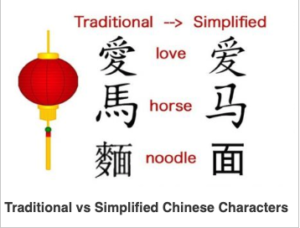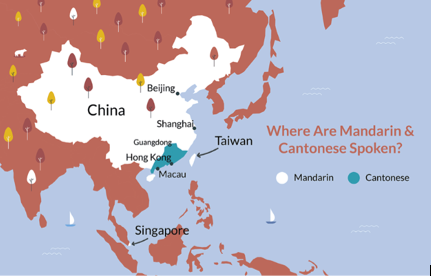
Chinese – Simplified or Traditional ?

When it comes to Chinese language, the question to ask is: which form? According to Wikipedia “Chinese language is a group of related, but in many cases not mutually intelligible, language varieties, forming the Sinitic branch of the Sino-Tibetan language family. Chinese is spoken by the Han majority and many minority ethnic groups in China. About 1.2 billion people (around 16% of the world’s population) speak some form of Chinese as their first language.”
How to know the correct form?
Out of so many Chinese dialects, there are only two official ones in China: Mandarin and Cantonese. So how would you know which one to use if your audience is Chinese? The answer is in knowing their geographical location. (See map above)
If your target markets are in:
People’s Republic of China (PRC),
Republic of Singapore or Taiwan, then the correct form is Mandarin with Simplified characters of the Chinese alphabet.
If your target audience is in:
Hong Kong, Macau, wider Guangdong province, including Guangzhou, and foreign Chinese communities in London, Australia or San Francisco, then the correct form is Cantonese with Traditional characters of the Chinese alphabet.
What is the difference between the two?
Both of these dialects share the same base alphabet, however there is a difference in characters and tonality. As a spoken language they are distinct and mutually unintelligible. While Mandarin uses four tones, Cantonese uses at least six, sometimes as many as nine. Mandarin speakers outnumber all other dialect speakers. Over time Mandarin has become the only official language in China, since it is the language taught at school & used for national TV and radio. To reach Chinese consumers in China, generally foreign marketers use Mandarin (Simplified Chinese).

To reach Chinese consumers most effectively in their own language, contact Branded Translations.

